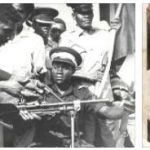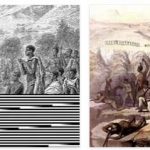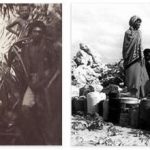
The cradle of humanity
Scientists assume that the first humans probably lived in the area of the Ngorongoro Highlands and the Serengeti. In this area, human bones have been found that were over two million years old. It is often said that this is where the “cradle of mankind” lies.
Whereby science today assumes that there was not just one cradle, but several cradles. Nevertheless, we can assume that people lived in Tanzania very early on.
Islam is spreading
As in many other South and East African countries, Bantu ethnic groups migrated around 1000 BC. In this region and settled there. Bushmen had already roamed the savannah before. Their origins were in western Africa, but they moved east to settle there. Around 1500 AD, Nilots came to present-day Tanzania. Their home was originally in the north. They mingled with the people who already lived there. Even before that, around the 8th century, trade between Arabia and the coastal regions began. As a result, Islam also spread in this region.
The first Europeans come to East Africa
Vasco da Gama was the first European to land in the East African coastal regions in search of the sea route to India. He was particularly fond of the island of Zanzibar. The Portuguese began to establish bases for their trade on the mainland and the islands. They also used weapons against the population who lived there.
But the Arabs were there earlier. For them, too, the area was important as a trading post. Arabs and Portuguese fought for the country and, above all, for influence in the region. At the same time, people were bought as slaves, mistreated and killed if they resisted. In the longer term, the Arab influence prevailed. Only the Masai warriors could resist and were not so easily fought.
From 1828 the sultans of Oman ruled Zanzibar and primarily promoted the trade in slaves and ivory.
German East Africa and British Mandate Area
At the end of the 19th century, Tanzania became a German colony as part of German East Africa. Today’s Rwanda and Burundi were also included. You can find out more about this at www.zeitklicks.de. So named Kilimanjaro in this time Kaiser Wilhelm tip. But the Africans resisted German rule.
Again and again there were uprisings that were brutally suppressed by German troops. For the Germans, the Africans living there were second class people and accordingly they treated the locals badly. At the same time, the colonial rulers expanded the country, built railways, founded schools and looked after the economy. During the First World War, the colonies also became the scene of fighting.
At the end of the World War, the British and Belgians split up the former German colony and Tanzania became part of Great Britain. At that time Tanzania was still called Tanganyika. From 1921 to 1961 it was now a British mandate area. The indigenous peoples had a certain say, but ultimately the country was under British administration. Even when the region became a trust territory of the UN (United Nations), the British remained decisive. In the course of time, more and more people wanted independence.
Tanzania independence
In 1961 Tanganyika became independent as an independent state under the first President Kambarage Nyerere. On April 26, the United Republic of Tanzania was created, a name that is based on the names Tan ganyika and Zanzibar (San sibar) and the historical name Azan ia. The then president managed to promote peaceful coexistence between people, but the economy developed poorly.
And after the foreign rule came to an end, the young state faced new threats again. Uganda was ruled by a bad dictator named Idi Amin. This raised property claims and sent soldiers to Tanzania. Again there was fighting and in the end Tanzania won. But war costs money – money that is then not available for schools, education, hospitals and roads.
In 1985 there was a change of government. The former socialist country became more democratic. The president resigned voluntarily. This enabled a freer system to emerge, in which several parties were allowed. 1995 there were free elections again for the first time.
As a country located in Africa according to a2zgov, today Tanzania is a federal presidential republic. The president is the head of state and government and the commander-in-chief of the armed forces.
Tanzania is thus a democratic multi-party system. For a long time Jakaya Halfan Mrisho Kikwete was President, Head of State, Head of Government and Commander in Chief of the Armed Forces. In 2015 he was replaced by John Magufuli. Tanzania enjoys a good reputation inside and outside Africa as a ‘haven of peace’.








